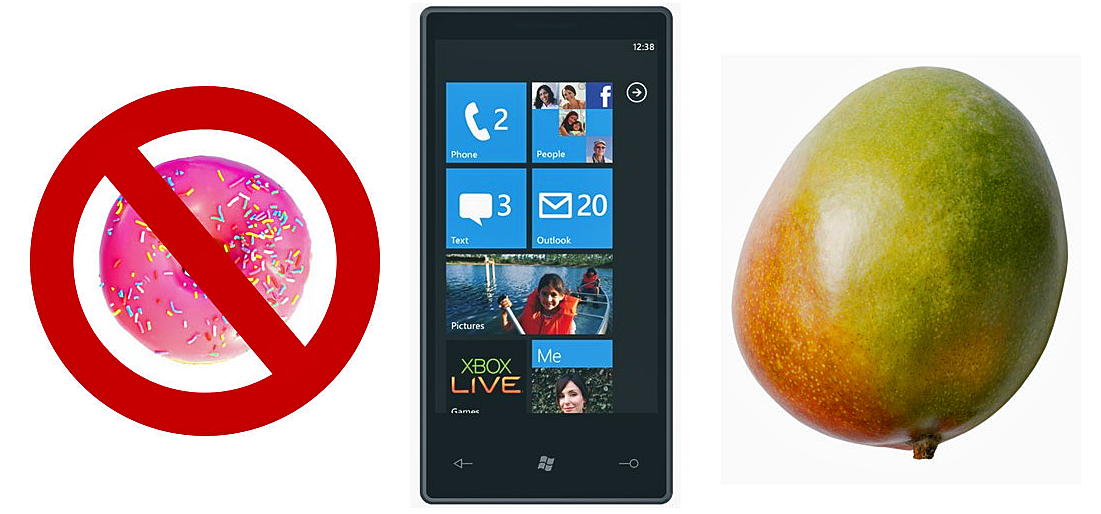Microsoft responds to update criticism, confirms second half of March for NoDo

Responding to criticism, Microsoft's GM of Customer Experience Engineering aka the guy in charge of Windows Phone updates, Eric Hautala, posted a lengthy explanation about the pre-NoDo update experience so far, NoDo itself and the process involved. While the write up was informative it still doesn't get too technical for the average reader and at least answers some questions (if not raise more). At the very least, we give Microsoft credit for taking the appropriate action here and keeping the consumer in the loop: no one likes it when something gets screwed up, but they do appreciate when you take the time to explain the situation.
The first part of the article describes "How software gets from us to you" and is mostly a gloss of what we already know: Microsoft develops/tests new software, it gets pushed to the carriers, OEMs and Qualcomm for testing and it gets sent to you, the end user. Some things are left out, like if the carriers/OEMs can send back the software for further revisions and how long the process can take. Hautala finally explains how the "staggered" approach--sending out updates to specific devices--allows them to pin-point problems easier, which is a good point, even if it's not the method we would like (universal update).
The next section went over the "success" of the pre-NoDo update. Once again, Microsoft write it as if the overwhelming majority had no problems, while the blogosphere will highlight those 10% where it failed. We'll leave that distinction up to you. Hautala of course expresses how Microsoft is not satisfied with the problems that occurred and, logically, they are working to prevent them in the future.
The one real interesting area is where Hautala addresses if carriers can block updates. He sets up for an answer but ultimately is quite evasive on the topic:
There’s one more thing I want to clear up. I’ve seen a lot of speculation on blogs and forums lately about whether carriers can “block” an update. We work closely with carriers to test and schedule updates. They may ask us for a specific date to start an update. They may ask for updates to be bundled together. But you should ultimately receive all the updates we send out.
That's not really anything we already don't know and sure doesn't sound like a denial but rather an affirmation that carriers can block one update but have to push the second (bundled with the first). Not too comforting if those updates are spread apart over a few months.
Finally, the big part was on the NoDo update. It is now confirmed that the second half of March is the target for that release. As expected, Microsoft is taking a few extra days to check and double check everything before that big push--something we can't really fault them for, especially with the world watching so closely. It's not the news we want to hear, but at the same time we understand the motivation behind it and will just have to remain patient. If there is one shining bit it's that 'Mango' still seems to be on track, despite previous rumors:
This short pause should in no way impact the timing of future updates, including the one announced recently at Mobile World Congress featuring multitasking, a Twitter feature, and a new HTML 5-friendly version of Internet Explorer Mobile.
So that's good. Sound off in comments on Microsoft's response: good enough for you? Good enough for the market?
Get the Windows Central Newsletter
All the latest news, reviews, and guides for Windows and Xbox diehards.
Source: Windows Team Blog

Daniel Rubino is the Editor-in-chief of Windows Central. He is also the head reviewer, podcast co-host, and analyst. He has been covering Microsoft since 2007 when this site was called WMExperts (and later Windows Phone Central). His interests include Windows, laptops, next-gen computing, and wearable tech. He has reviewed laptops for over 10 years and is particularly fond of 2-in-1 convertibles, Arm64 processors, new form factors, and thin-and-light PCs. Before all this tech stuff, he worked on a Ph.D. in linguistics, performed polysomnographs in NYC, and was a motion-picture operator for 17 years.
